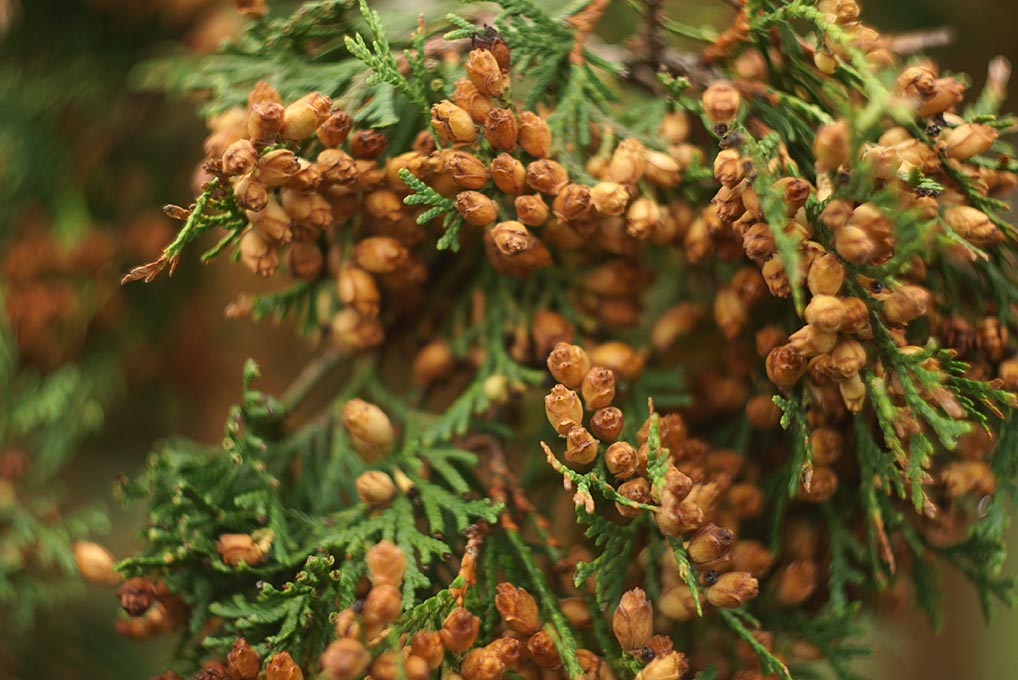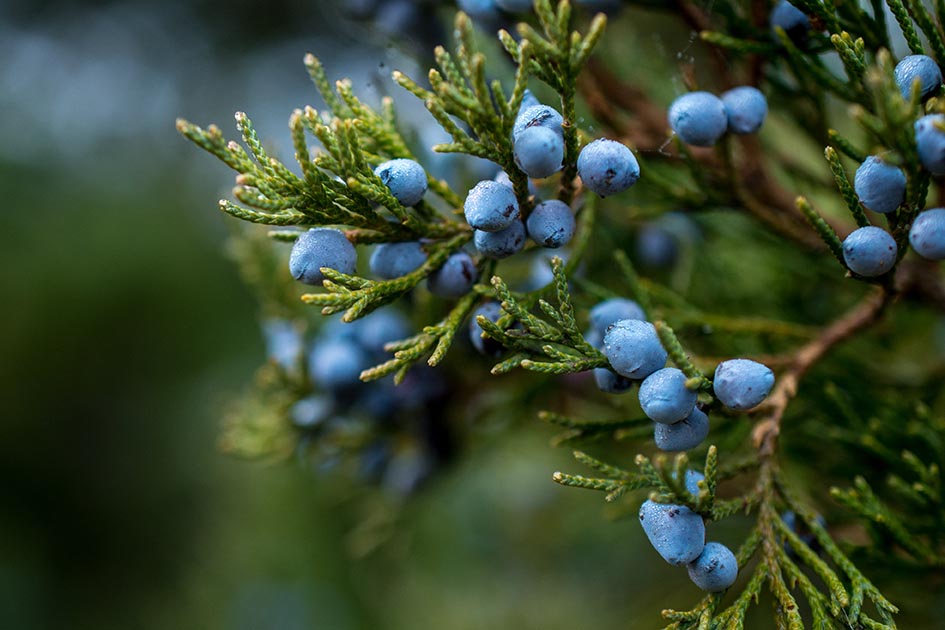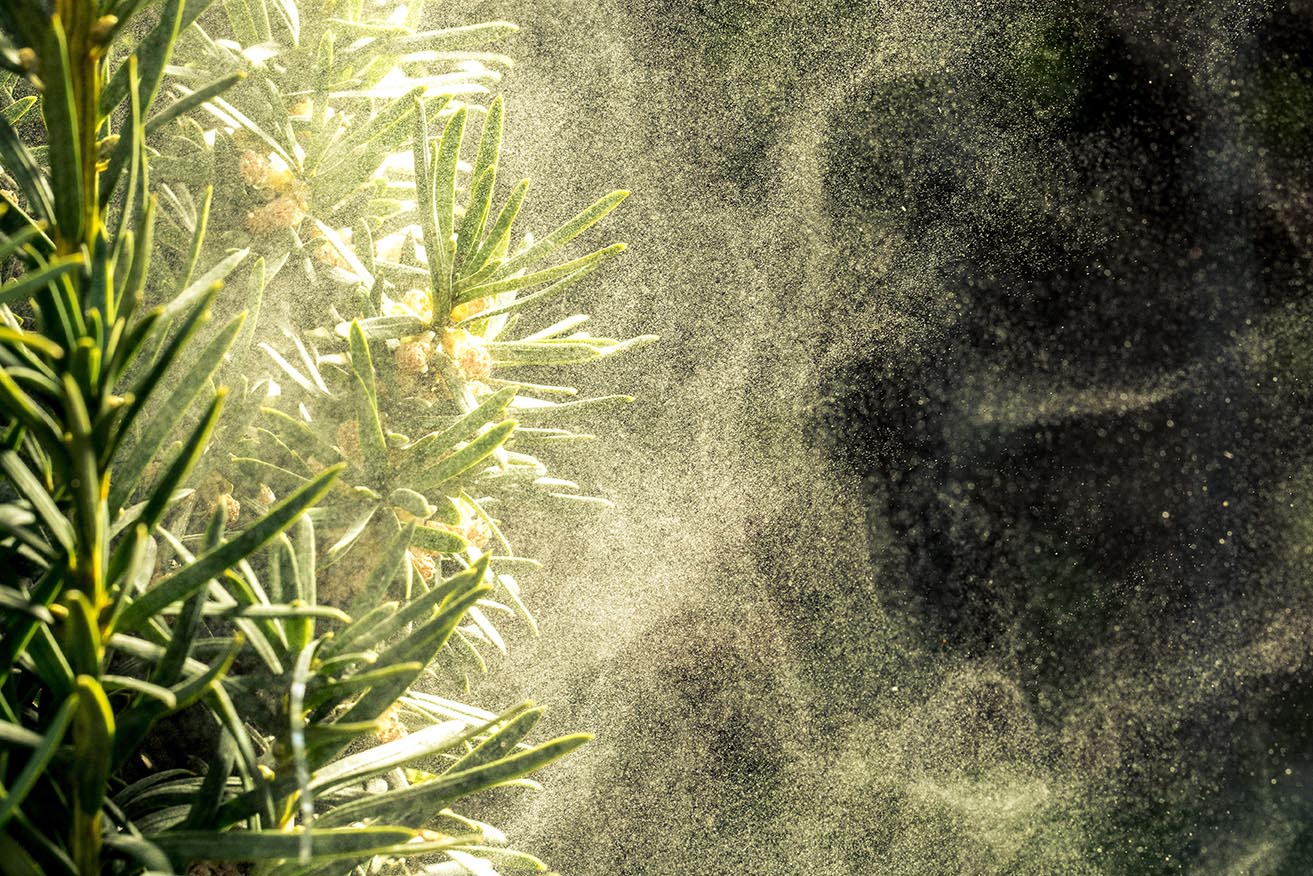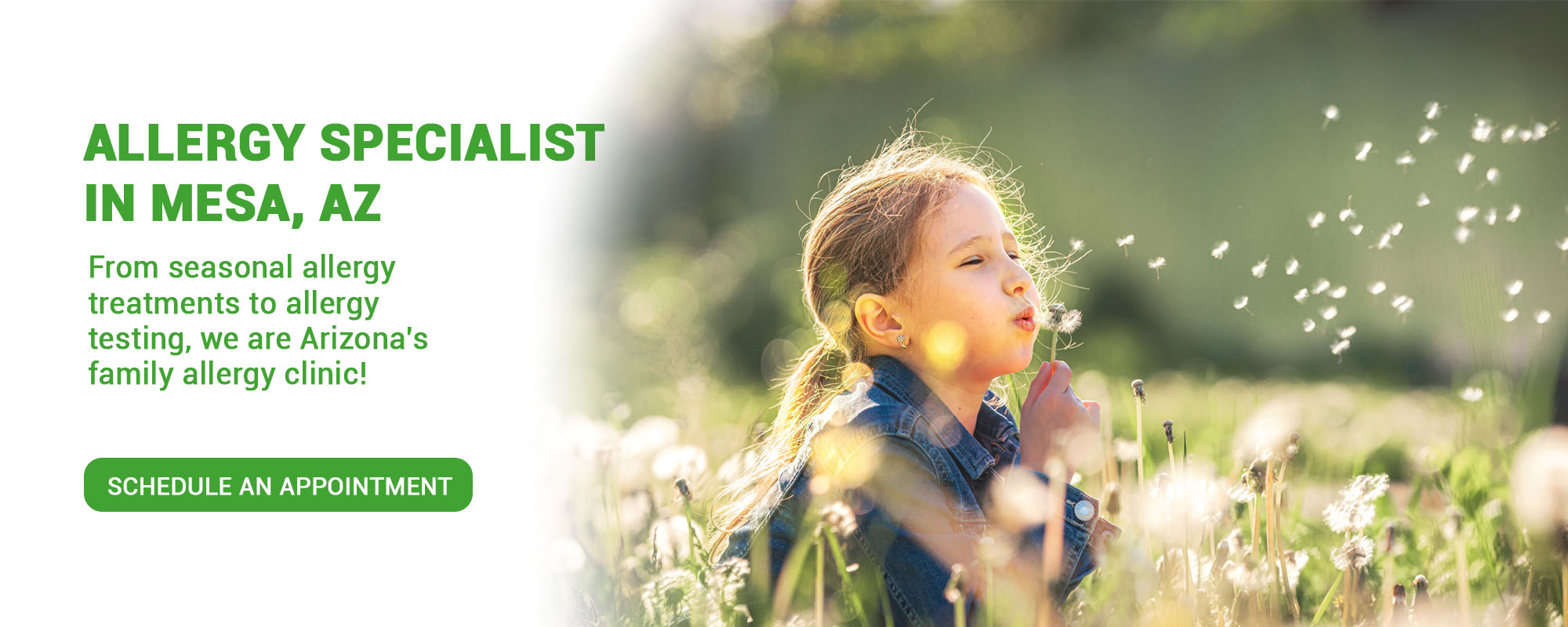There are a lot of people coughing, wheezing, and sneezing all around Arizona this Spring 2025. Because we had both a mild winter (with record low snow and rain) and an extended winter (On Groundhog Day 2025, Punxsutawney Phil saw his shadow, predicting six more weeks of winter) the allergies in Arizona in 2025 are very bad. Asthma and allergies are very closely related, so that means asthma is also very bad in Arizona in 2025.

What is Causing My Allergies in Arizona?
Many people who have never experienced asthma or allergy symptoms before moving to Arizona are surprised when these serious allergy symptoms show up. So what causes all the allergy symptoms in Arizona?
Pollen and Dust are the 2 biggest factors; of-which Arizona has a lot-of. Blowing dust is a semi-constant in Arizona — with the thin layer of dusty topsoil getting tossed up and blown around in the many Arizona windstorms and Haboobs. Many are not surprised to hear that Arizona has a lot of dust, based on its popular reputation for being dry and dusty; though many are surprised to hear that the numerous plants, trees and forests around Arizona are the true culprits of such active allergies.

Trees That Cause Allergies in Arizona
There is a diverse number of species of plants in Arizona, and many of them are pollen-bearing flowers and trees. Pollen has a tendency to cause many of the common symptoms of seasonal allergies (Sneezing, runny nose, puffy face, etc.). Here are the top allergy-inducing trees of Arizona.

Orange Trees — Mesa and the East Valley of Phoenix Arizona used to be covered in square miles of orange groves until the early 2000s when the groves slowly started disappearing to make way for housing developments. At the height of the citrus boom, hundreds of thousands of Phoenix area residents would be hit with the floral smell of citrus in spring, followed by sneezing and wheezing. Although there are less orange trees now than in years-past, there are still thousands of trees in Mesa and in the West Valley that will cause allergies and asthmas to increase during “Blooms.”
Cedar / Juniper Trees — The main producer of allergy-inducing pollen in Arizona is the millions of Juniper Trees around the state. Common in the “high country” of Northern Arizona and in the “Transition Zone” of Central Arizona, juniper trees can cause a lot of allergies year-round but are most potent in the spring.
When Cedars Bloom, Allergies Loom
The video above shows the “pollen explosion” when someone shakes a Juniper / Cedar tree during its bloom. It often looks like smoke, because it is so thick; and high winds in Arizona carry this pollen all across the state. Even desert areas with relatively low vegetation and no juniper trees can be covered in this pollen dust.

What Are The Symptoms of Juniper Allergies?
“Cedar Fever” was a common name years ago for the allergy symptoms people experience during the pollen bloom of Cedar / Juniper Trees. This is similar to “hay fever” where the allergy symptoms are so severe, that they cause physical illness (Similar to Flu). Symptoms of Cedar Fever and Juniper Allergies include:
- Dark Circles Under The Eyes
- Sore Throat
- Nose Congestion (Stuffy or Blocked Nasal Passages)
- Runny Nose
- Itchy and Watery Eyes
- Sneezing and Wheezing

Cross-Reactivity with Juniper Pollen Allergies
What makes juniper and cedar trees so highly allergic is the “cross-reactivity” properties of the pollen. This means that when exposed to this allergen, it will also worsen the sensitivity to other substance. In-short, juniper pollen can give people severe allergies who otherwise do not have them.
If you are allergic and having allergic reactions to juniper pollen, you may also see increased sensitivity and allergic reactions to:
- Pine Tress
- Weeds
- Grasses
- Flowers
- Allergic reactions to tree-bearing fruits
- Tomato
- Apple
- Cherries
- Kiwi
- Bananas
- Paprika (Peppers)
 How Do You Test for Juniper and Cedar Tree Allergies?
How Do You Test for Juniper and Cedar Tree Allergies?
Skin Allergy Testing is the most common form of testing for allergies. These test for the most common environmental allergens including: trees, dust, grasses, pollen, mold, foods, and pet dander. A common allergy test will tell you if you are allergic to juniper and cedar pollen.
How Do You Treat Juniper and Cedar Tree Allergies?
Depending on the severity of your allergies, your family allergy specialist can give you the recommended treatments which will range from over-the-counter remedies for symptoms alongside antihistamines for minor allergies; to allergy shots and sublingual allergy treatments for those with severe seasonal allergies.
Arizona Allergy Specialists
At The Family Allergy Clinic and Wellness Center, we are the experts when it comes to all things “allergies.” We especially like helping new residents to Arizona figure out why they are sneezing, wheezing and sick all the time. Come in and let us diagnose your asthma, allergies, hay fever, and cedar fever!



